As 260 tribal families living since pre-British times in Powai face eviction, they say 'we are staring at starvation'
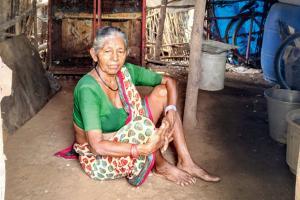
Laadki Barap, 70, hasn't left Peru Baug for 10 years. Her typical day involves a visit to Vihar lake to fish and tending to chores at home. 'If they send us to Kurla, how will we figure our way around the city?' she wonders
October may not have arrived in the city, but the heat that marks the month preceding the faux winter most certainly has. Admittedly, the temperature at Peru Baug is at least a couple of degrees lesser than elsewhere in the city at 3 pm. Still, it's an arduous task to sit down 20 young children, most with little interest in being here, and teaching them the basics of arithmetic and Devnagri script (reading and writing) for two hours a day, six days a week.
Yet, for 43-year-old Jyoti Dode it's more of a mission. Even with the odds stacked against her. After all, for a teacher in a campus that produces some of the world's, best minds - with state-of -the-art teaching and research facilities - the only tools at her disposal are a few paper cutouts where a 'Ka' in Devnagri helps the student identify that it denotes a Kangaroo (an animal that s/he would be very unlikely to know or possibly identify). But, for Dode, who often has to drag the kids to the small space outside her home - the village is in shambles - an education may help them stand up against the institution bent on robbing them of their land.
"We have lived here since the British period and, because we are not educated enough, we had no idea when the government handed the land over to IIT Bombay," she says, adding, "We hope that our children can change that."
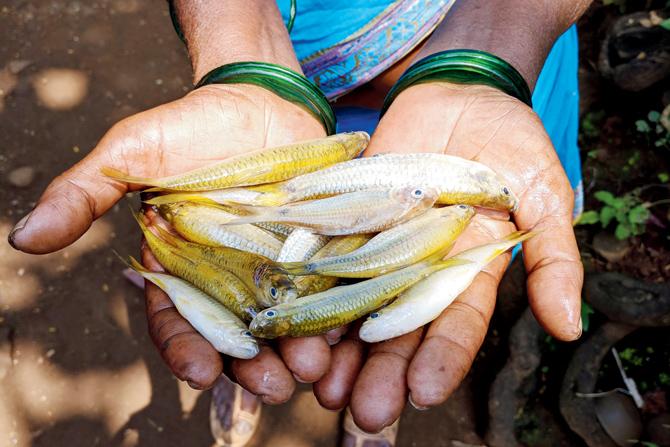
Maali Rano Urade with the day's catch of dandavat fish which she cooks with bamboo shoot picked from the forest Pics/Arita Sarkar
Against the might of IIT
The IIT campus in Powai is spread over an area of 550 acres. On the northern fringe, closer to Vihar lake and near the National Institute of Industrial Engineering lies Peru Baug, which 260 adivasi families - some of whom are from the Warli tribe and some of whom are Malhar Kolis - call home. The families claim that they have lived here for at least four generations, while IIT was established here only in 1958.
For decades the two have had a symbiotic relationship. The adivasi men would have odd jobs on the campus, their children have access to the on-campus Kendriya Vidyalaya (which they don't attend regularly enough) and the tribals continue to live as before.
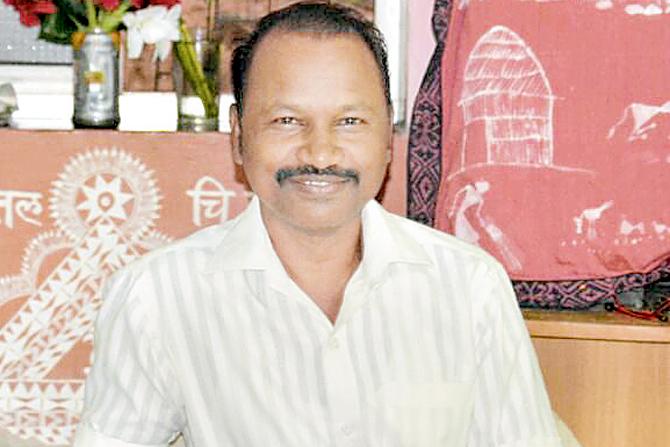
Prakash Bhoir, Adivasi from Kelti Pada, Aarey Colony
A few years ago, however, trouble started brewing. In 2012, the adivasis staged a "morcha" after conversations with the institute regarding installation of two water connections didn't yield results, says Dode, the representative of the village committee. Having grown up in Saki Naka and married into Peru Baug, Dode having studied till Std IX, is one of the few residents here to have received even primary education. She adds, that the water connection came in 2015.
Earlier this month, there were reports that the IIT management has now asked the adivasis to move out of the campus entirely, and the MMRDA has been tasked with acquiring accommodation for them at Qureshi Nagar in Kurla.
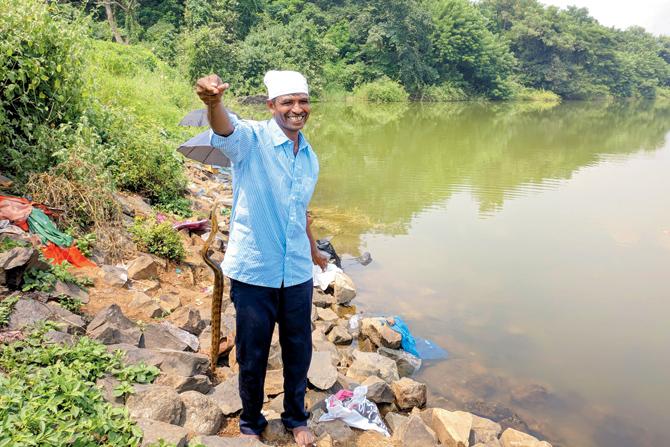
Prabhu, a resident of Peru Baug shows off his catch for the day. Most of the tribe's men are employed on the IIT campus and earn around Rs 8,000 a day. In the evening, they catch fish, which sustains their livelihood. Pics/Arita Sarkar
Dode puts the IIT move down to the 2012 protests. It was only after that, she says, that IIT officials started talks about moving them out. "Initially, they asked us to leave our village and offered accommodation in Kanjur Marg. Some of us agreed since it would still be close to the campus. The men in our village could still keep their housekeeping jobs and the women could still come to fish in the lake. But then they changed their mind and said that we would have to go to Kurla instead, which is too far for us," she says.
And even while they live on campus, some residents say, having IIT for a neighbour isn't easy. Maali Rano Urade, 70, says, "Earlier we could grow a lot of vegetables, which was enough for us to eat and then sell in the market. But, over the years, IIT officials have forced us to reduce the amount of vegetables we grow. They have made our lives difficult." Not just that, she adds that they are not allowed to repair houses or cover their huts with plastic sheets during the monsoon months. She alleges that IIT officials and guards visit their village every day to ensure that they haven't made any extensions.
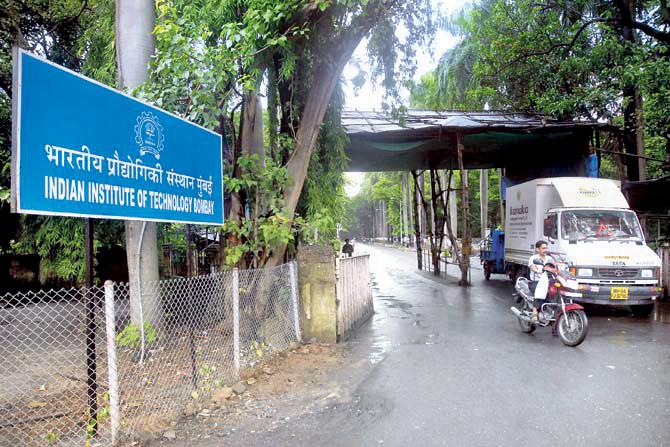
The world ends at IIT
Kanjur Marg would have been a compromise, but Kurla is almost like another country to the residents of Peru Baug, some of whom have barely stepped outside of the boundaries that define the IIT campus.
Laadki Barap, 70, is one of them. In the last 10 years, she says, her life has been confined to her home and the Vihar lake, where she fishes. "My life involves going to the lake to fish and tending to chores at home. I haven't gone out of the village in a very long time and I have no idea what the area outside looks like. If they send us to Kurla, many of us won't be able to figure our way around the city," she adds.
But, life inside Per Baug is both busy and self-sustained. Urade's day for instance begins at the crack of dawn. By 7 am when we met her, she was already seated on the shore of the lake throwing her fish line into the water. Her catch usually comprises small fish called 'dandavat'. On a lucky day, she will catch rohu, or even black pomfret. When she has enough for a meal for herself and her family, which is usually by afternoon, she returns home to cook it with tender bamboo shoots picked from the forest area around the lake.
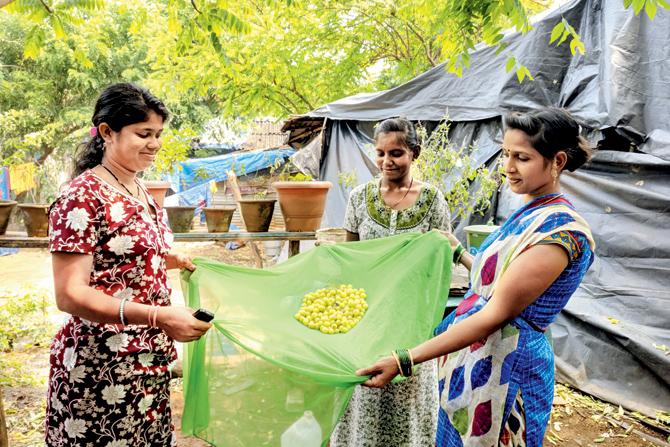
The women from Peru Baug seen with amla that they collected from trees in the forest. The tribals grow some of the vegetables they eat in small patches of land near their homes. Wild vegetables are grown only during the monsoon months.
The homes here don't have gas cylinders. They cook their food on wood which is found neatly stacked in sheds outside their huts. "Since the wood gets wet during the rains, we collect enough wood to last the three months of monsoon. Once the rain stops, we go out to look for more wood," Urade adds.
The tribals grow some of the vegetables they eat in small patches of land near their homes. Wild vegetables which are not available in the market are grown only during the monsoon months. "For the rest of the year we collect the tender shoots of bamboo plant, flowers of the Kurdu plant or leaves of Takla plant and make a vegetable out of it. This way we can save money," says 28-year-old Depenti Urade, who we meet while she is tending to the vegetable patch near her house. She adds that during the monsoon months, they are able to sell the vegetables they grow when they have more than they can consume. The women sell bananas, amla and colocasia leaves used to make aaloo vadi, a popular Maharashtrian dish, in the market to make some extra money.
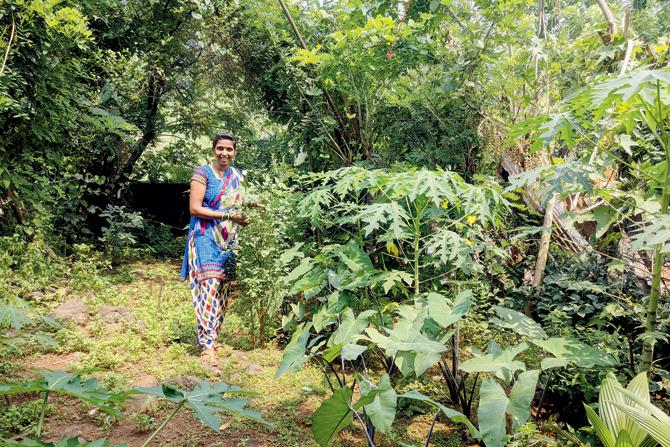
"For the rest of the year we collect the tender shoots of bamboo plant, flowers of the Kurdu plant or leaves of Takla plant and make a vegetable out of it. This way we can save money," says 28-year-old Depenti Urade
The village's men are not around. They spend the day at work as housekeeping staff at the student hostels on campus and then go fishing in the evening. Some of the women work there too, even though the pay isn't great. "We work in the canteen where we cook, serve and clean dishes. We work eight-hour shifts and the contractor pays us around Rs 8,000 every month. But since we don't have to purchase food, we can manage for now," says 45-year-old Sevanti Urade, Depenti's mother-in-law, who hails from another adivasi pada in Aarey colony.
Tribals, not slumdwellers
The community here feels it's the lack of education that's doing them in. They say they had allowed the Slum Rehabilitation Authority officials to conduct a survey in their village only because they were promised an alternate accommodation nearby. "We were here long before IIT even existed. But the government is kicking us out of our land just because we aren't educated enough to understand our rights. If we can't grow our vegetables and catch fish, how will we survive in a tiny flat in Kurla?" asks Dode, adding that they even suggested that they be moved to another part of the IIT campus, instead of being ousted out of premises altogether. But, that was not considered.
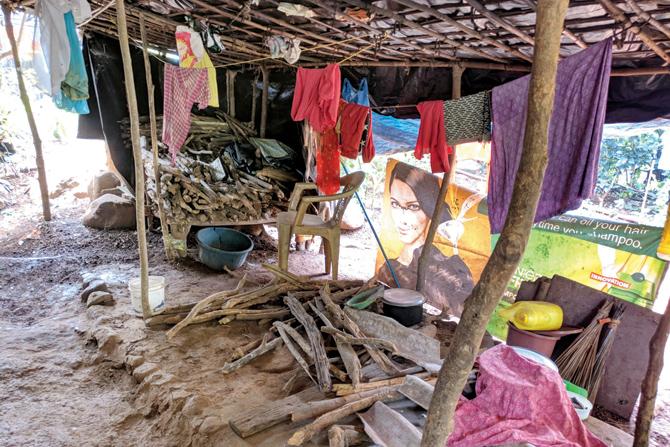
Firewood used by villagers to cook food
The residents accompanied by members of Shramik Mukti Sangathna, an NGO advocating rights of tribal communities had approached Rajendra Gavit, an MP of BJP from the Palghar Lok Sabha constituency last month. During a visit conducted two weeks ago, Gavit had reassured them that he would take up the issue with Chief Minister Devendra Fadnavis and IIT administration last week. Despite several calls and messages, Gavit could not be reached for a comment.
Tribals from other parts of the city advise the Peru Baug residents not to budge from their current space, especially under SRA laws. Prakash Bhoir, a resident of Kelti Pada in Aarey Colony feels that that government's solution of shifting adivasis to SRA flats is short-sighted. "Why should the SRA rehabilitate us? We're not slum residents who have a village to go back to. We belong here and this is the only home we know. We have been paying taxes for the land we grow our crops on and we have papers to prove it. Then why should we just accept a small flat?" he asks. He argues that it's not the SRA, rather the tribal department that ought to conduct surveys on their land. "People don't want to move out because it's not just about the house. It's about land, our animals and the trees that we have taken care of for several generations," he adds.
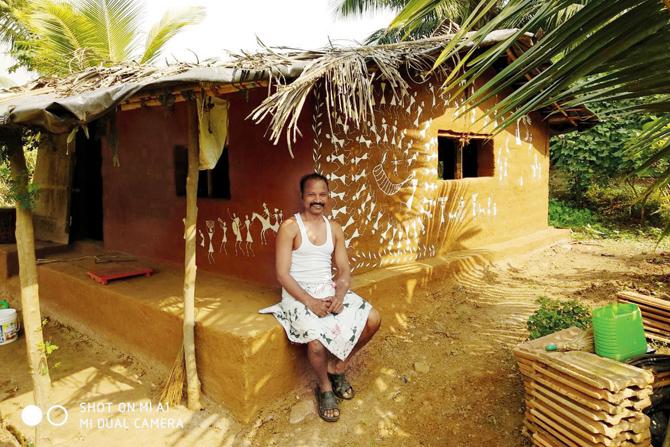
Prakash Bhoir, a resident of Kelti Pada in Aarey Colony
Those who have been advocating tribal rights feel the government has long tried to silence the voice of the tribal community across the country and they are yet to come across a case where tribals were rehabilitated in an appropriate manner. Adivasis everywhere, they say, are deliberately being harassed by various government agencies by not allowing them to set up electricity connections or not granting permission to construct toilets.
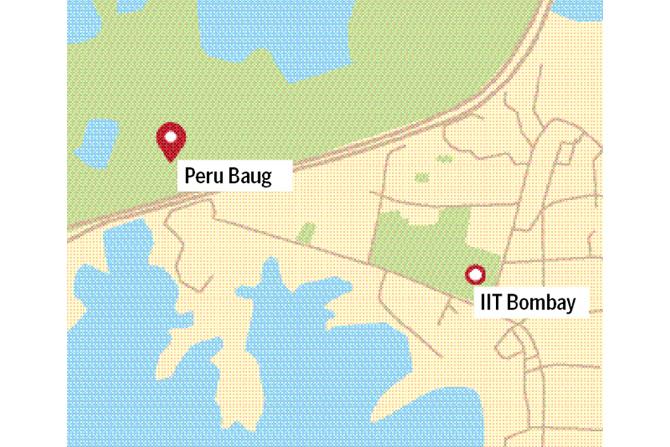
Graphic/Uday Mohite
Cassandra Nazareth, a social worker, who has been working with adivasis living in 12 padas in Aarey Colony says the government was disconnecting them from the earth they worship by shifting them to SRA flats. "How will they grow their vegetables in a 225 sq ft tenement? What the government needs to do is engage with the adivasis and come up with a solution from within the community," she adds.
- with inputs from Pallavi Smart
The fight for land
IIT Bombay officials stated that the adivasis are being moved to make way for the Research Park that is currently under construction. Based on their website, the research centre aims to bring IIT Bombay and the industry together and promote research and development collaborations. When asked about the tribals being displaced from their land, KP Unnithan, the superintendent engineer of IIT Bombay administration had only one response for all questions. "The land belongs to IIT Bombay," he says repeatedly.
The adivasis however don't have tribal certificates and thus, are unable to prove that they have lived on the land for the past several decades. It was only a few years ago, with the help of Shramik Muki Sangathna and political involvement that they were able to get their Aadhaar cards and election IDs.
What the authorities say
'The accommodation will be in Kurla, but the SRA is yet to handover the tenements to us. We are currently unaware of the number of adivasis who will be resettled'
Dilip Kavatkar, joint project director of MMRDA.
Once tribal homes, now slums
Nitin Kubal, who has been a field officer with TISS in the M-East Ward Project for the past three years stated that the survey conducted by Pune-based Tribal Research Institute in 2003, which was published two years later is the only comprehensive data available on the number of tribal settlements in Mumbai. "Based on the survey, there were 222 adivasi padas in Mumbai of which 159 converted into slums and only 63 are still isolated padas, which are located largely in western suburbs. No other recent surveys have been conducted," he said.
Also Read - Section 377: IIT-Bombay Students Celebrate Supreme Court's Judgement
Catch up on all the latest Mumbai news, crime news, current affairs, and also a complete guide on Mumbai from food to things to do and events across the city here. Also download the new mid-day Android and iOS apps to get latest updates
 Subscribe today by clicking the link and stay updated with the latest news!" Click here!
Subscribe today by clicking the link and stay updated with the latest news!" Click here!









